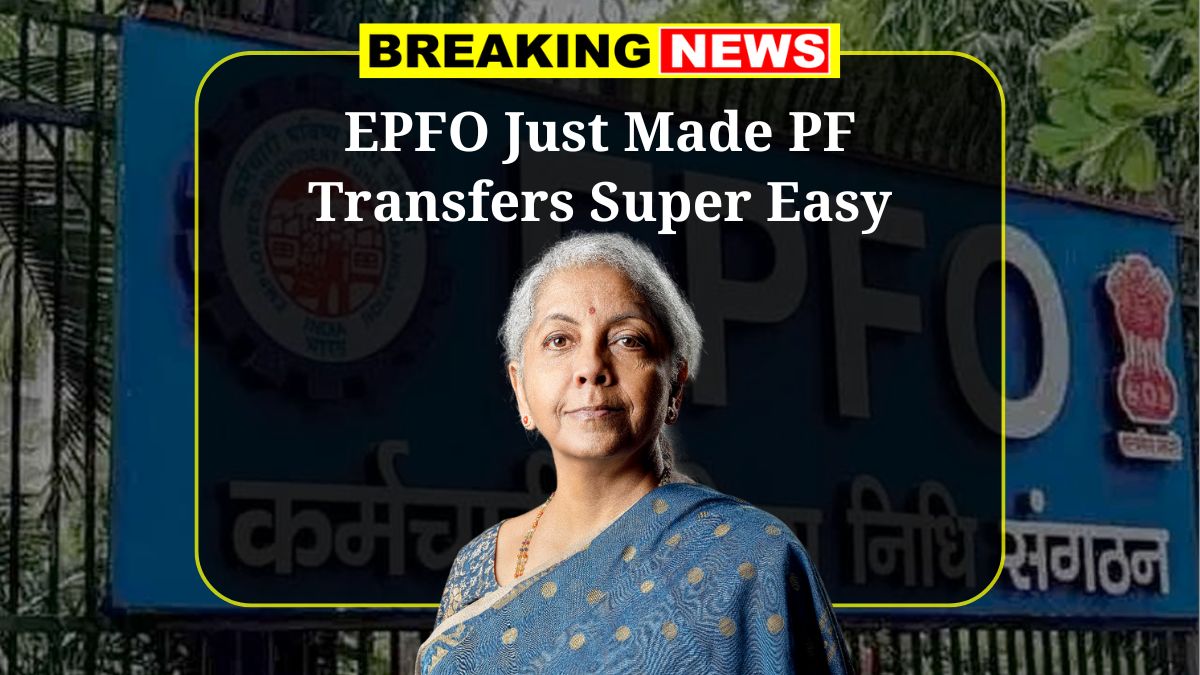EPFO – If you’re switching jobs and dreading the paperwork for transferring your PF (Provident Fund), here’s some really good news. The Employees’ Provident Fund Organisation (EPFO) has announced a big change that will make PF transfers much smoother and hassle-free.
No More Running Behind Employers for PF Transfer
Earlier, when you changed jobs, transferring your PF used to involve a lot of back and forth. You had to wait for approvals from your old employer, your new employer, and even two different EPFO offices — the one where your old account was and the one where your new account is. Naturally, this led to frustrating delays for many.
But now, that’s changing for good.
EPFO has updated Form 13, which is the form used for transferring your PF from one employer to another. Under the new rules, you no longer need approval from the new employer’s PF office. Once the source PF office (your old employer’s EPFO office) approves the transfer, the money will be directly credited to your new PF account. That’s it. No extra steps, no waiting around.
Why This Change Matters
This update will benefit more than 1.25 crore EPFO members. In terms of money, it’s expected to speed up the transfer of nearly ₹9,000 crore in PF every year. That’s a huge boost for employees who often need quick access to their PF balances during job transitions.
Tax Made Easy: Clear Info on Taxable PF Amounts
EPFO has also introduced something really handy for tax time. Now your PF passbook will clearly show taxable and non-taxable interest amounts. This means calculating TDS (Tax Deducted at Source) on your PF interest just got a whole lot easier.
So the next time you withdraw PF or check your balance, you’ll know exactly how much tax you might have to pay, without any confusion.
Bulk UAN Generation Now Allowed in Special Cases
Another important update – for special scenarios like when PF trusts surrender their exemptions or when there are past payments pending due to court orders, EPFO has started allowing bulk generation of UANs (Universal Account Numbers).
Earlier, Aadhaar was mandatory for UAN creation. But now, even if Aadhaar is not seeded right away, UANs can be generated in bulk using member IDs and other information. These UANs will remain “frozen” until Aadhaar is linked, just to keep your funds safe. But it ensures there’s no delay in crediting your PF while you complete the linking process.
ESIC Adds 15.43 Lakh New Members in February
On a related note, the Employees’ State Insurance Corporation (ESIC) also shared some positive numbers. In February 2025, over 15.43 lakh new members joined the ESIC scheme. Even more encouraging — 7.36 lakh of them were under the age of 25, which shows how many young employees are entering the formal job sector.
Also, 23,526 new companies or establishments were added under the ESIC scheme. Plus, 3.35 lakh women enrolled in February alone — a great sign of growing female participation in the workforce.
Final Thoughts
Whether it’s making PF transfers smoother, simplifying TDS, or helping new members join ESIC, these updates show that EPFO and the Ministry of Labour are working towards creating a more employee-friendly system. If you’re planning a job change or just managing your finances better, now is the perfect time to log into your EPFO account, update your details, and make sure your PF records are in order.
Disclaimer:
This article is based on publicly available updates from the EPFO and Ministry of Labour. For detailed queries or personal advice, always refer to the official EPFO website or consult a financial advisor. Rules and features may change over time, so stay informed and verify information through authorized sources.





